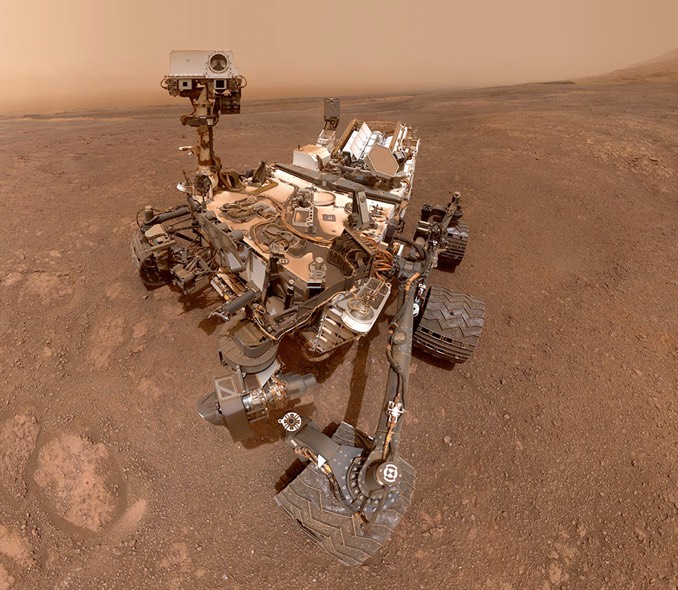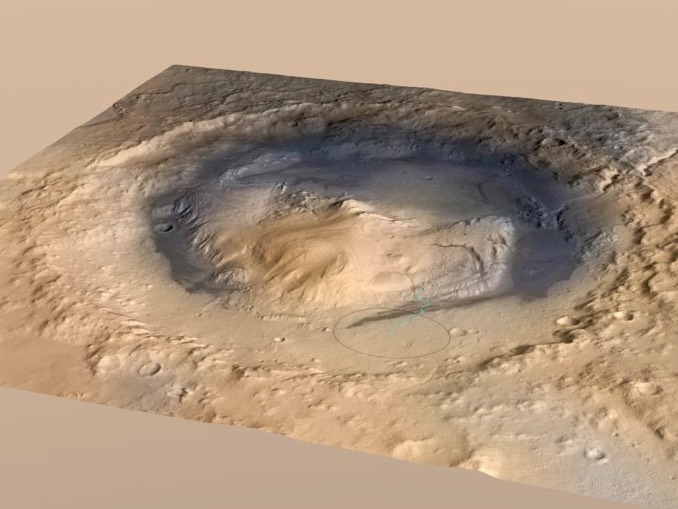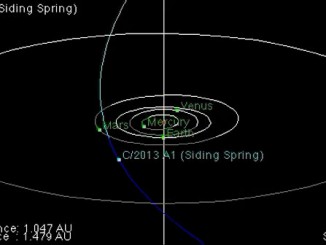
Using the accelerometers and gyroscopes on board the Curiosity Mars rover, researchers have measured subtle changes in the tug of martian gravity as the robot has climbed the lower slopes of Mount Sharp, showing the underlying rocks making up the 5.5-kilometre-tall (18,000 foot) mound of layered terrain are much more porous than initially thought.
Mount Sharp is the central feature of Gale Crater, Curiosity’s landing site, a towering mound rising 5.5 kilometres (18,000 feet) above the crater floor. The new findings raise fresh questions about how the mound was formed, indicating the crater may not have been completely filled in the past as previously thought.
“This study represents the first gravity traverse and measurement of rock density on Mars,” Nicholas Schmerr, a geologist at the University of Maryland, said in a release describing the measurements. “The low density of rocks in Gale Crater suggests that they did not undergo deep burial.
“This could mean that Mount Sharp was not excavated by erosion, but rather was constructed by wind deposition and other processes. Either way, it seems that Mars has had the capability to lay down significant amounts of low-density sedimentary rocks that record a complex environmental history.”
The researchers were able to reach that conclusion after analysing five years of data from Curiosity’s ultra-sensitive accelerometers, normally used to help determine the rover’s orientation. When the rover is stationary, the accelerometers also can detect the slight tug on them caused by the downward pull of Mars’ gravity.

More than 700 archived accelerometer measurements recorded between October 2012 and June 2017 were calibrated to eliminate the effects of temperature and Curiosity’s tilt and compared against models of the martian gravity field. The results also were compared to data collected by another instrument that characterises crystalline minerals in multiple rock samples to help determine porosity.
“The lower levels of Mount Sharp are surprisingly porous,” said Kevin Lewis, a researcher at Johns Hopkins University and lead author of the study. “We know the bottom layers of the mountain were buried over time. That compacts them, making them denser. But this finding suggests they weren’t buried by as much material as we thought.”
The findings suggest Mount Sharp’s lower slopes were compacted by less than 1.6 kilometres (1 mile) of overlying material compared to 5 kilometres (3 miles) if Gale Crater had been completely filled in the distant past.
“There are still many questions about how Mount Sharp developed, but this paper adds an important piece to the puzzle,” said Ashwin Vasavada, Curiosity project scientist at NASA’s Jet Propulsion Laboratory. “I’m thrilled that creative scientists and engineers are still finding innovative ways to make new scientific discoveries with the rover.”



